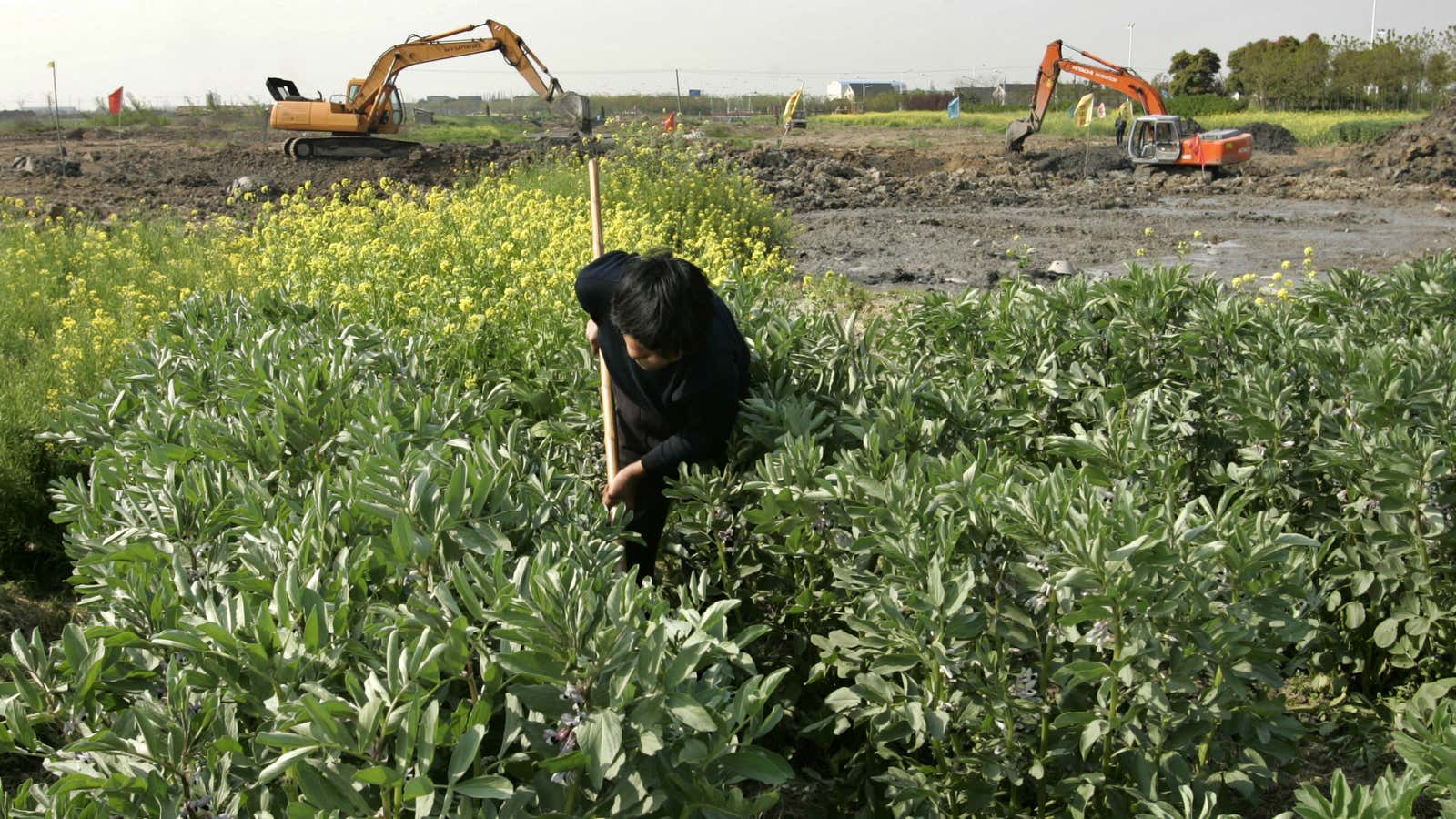For decades, China’s economic development model emphasized cheap industrial growth at all costs. Those costs are now becoming apparent, at least in terms of the human toll from water and air pollution. But the consequences of soil pollution, which the government deems a “state secret,” have been less clear.
That’s finally starting to change. A news report out today signals just how lethal soil contamination is likely to turn out to be. In the last four years, at least 26 people in Shuangqiao, a village in Hunan province (link in Chinese), have been poisoned to death by cadmium run-off from a chemical plant. Of those, 20 died of cancer.
Soil samples from the village showed levels of cadmium, a heavy metal that has been shown to cause cancer in animals (pdf), at 300 times the legal standard. Health officials found that one-sixth of the 3,000 villagers tested positive for cadmium toxicity. The China Youth Daily account reported that, in addition to the high mortality rate, children were also born with deformities, as well as having irreversible effects of lead poisoning among five children, including nerve damage and mental retardation. Though the plant was shuttered in 2009, industrial waste was never cleaned up, and a toxic odor lingers still today, says the South China Morning Post (paywall).
This comes on the heels of Guangdong Province’s unexpected public announcement that 28% of the soil in southern China’s Pearl River Delta (link in Chinese) exceeded limits on heavy metal pollution. That report also revealed that 50% of Guangzhou’s and Foshan’s soil was excessively contaminated. Perhaps other provinces will be inspired by Guangdong’s lead.
But even as provinces begin to take initiative in publicizing pollution rates, shutting down polluting factories and preventing harmful cultivation, signs so far suggest that their pernicious effects will linger.
Soil pollution comes primarily from industrial factories and from fertilizers and pesticides related to farming. The health of villagers of Shuangqiao might suffer most acutely, but soil contamination in China’s major agricultural areas—provinces like Hunan and Guangdong—affects the entire country, adding poisons to the food supply on a massive scale. That became apparent in the recent discovery that 44% of rice samples in Guangzhou contained poisonous levels of cadmium.
In a detailed article on soil pollution in May, Caijing unraveled several examples of otherwise rarely reported poisoning incidents, such as a July 2006 incident in Suzhou, where six construction workers fell into comas after digging into soil once occupied by a chemical factory.
The government has paid little attention to preventing this. For instance, of the sites of the 142 factories relocated from Beijing between 2001 and 2005, only eight had been decontaminated, said Caijing. And news about contaminated land plots are usually “strictly blocked.” That may be because cleaning up sites of buried or permeated industrial and agricultural waste can be hard—especially now that prime real estate in major cities sits on plots that have never been assessed for pollution levels, let alone decontaminated.
